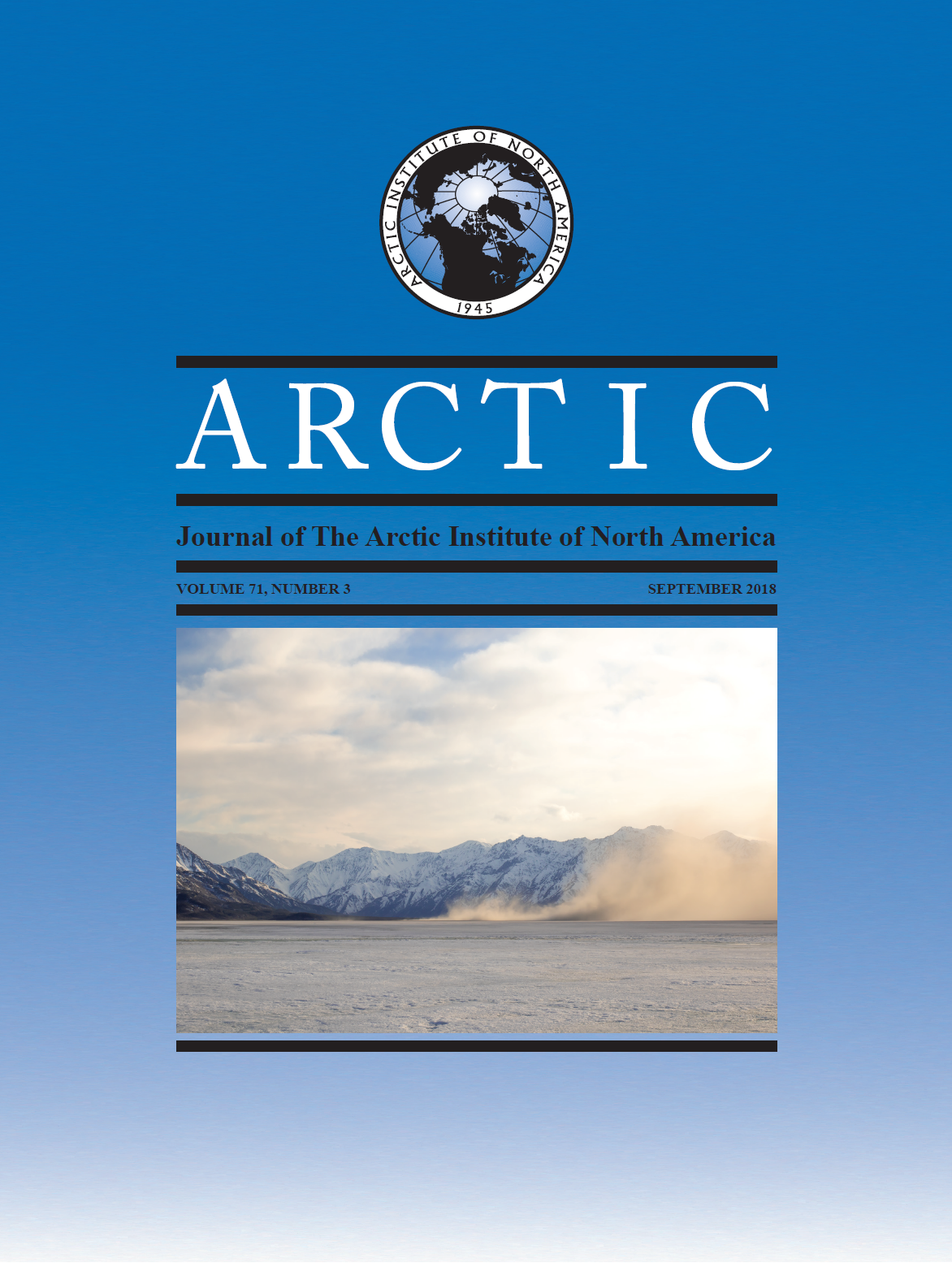Seal Occurrence and Habitat Use during Summer in Petermann Fjord, Northwestern Greenland
DOI:
https://doi.org/10.14430/arctic4735Keywords:
Petermann Glacier, marine mammals, ice-tongue fjord, Arctic seals, sea ice, Pusa hispida, Erignathus barbatus, Crystophora cristata, Pagophilus groenlandicusAbstract
Ice-associated seals are considered especially susceptible and are potentially the first to modify distribution and habitat use in response to physical changes associated with the changing climate. Petermann Glacier, part of a unique ice-tongue fjord environment in a rarely studied region of northwestern Greenland, lost substantial sections of its ice tongue during major 2010 and 2012 calving events. As a result, changes in seal habitat may have occurred. Seal occurrence and distribution data were collected in Petermann Fjord and adjacent Nares Strait region over 27 days (2 to 28 August) during the multidisciplinary scientific Petermann 2015 Expedition on the icebreaker Oden. During 239.4 hours of dedicated observation effort, a total of 312 individuals were recorded, representing four species: bearded seal (Erignathus barbatus), hooded seal (Crystophora cristata), harp seal (Pagophilus groenlandicus), and ringed seal (Pusa hispida). Ringed seals were recorded significantly more than the other species (χ2 = 347.4, df = 3, p < 0.001, n = 307). We found significant differences between species in haul-out (resting on ice) behavior (χ2 = 133.1, df = 3, p < 0.001, n = 307). Bearded seals were more frequently hauled out (73.1% n = 49), whereas ringed seals were almost exclusively in water (93.9%, n = 200). Differences in average depth and ice coverage where species occurred were also significant: harp seals and bearded seals were found in deeper water and areas of greater ice coverage (harp seals: 663 ± 366 m and 65 ± 14% ice cover; bearded seals: 598 ± 259 m and 50 ± 21% ice cover), while hooded seals and ringed seals were found in shallower water with lower ice coverage (hooded seals: 490 ± 163 m and 38 ± 19% ice cover; ringed seals: 496 ± 235 m, and 21 ± 20% ice cover). Our study provides an initial look at how High Arctic seals use the rapidly changing Petermann Fjord and how physical variables influence their distribution in one of the few remaining ice-tongue fjord environments.


